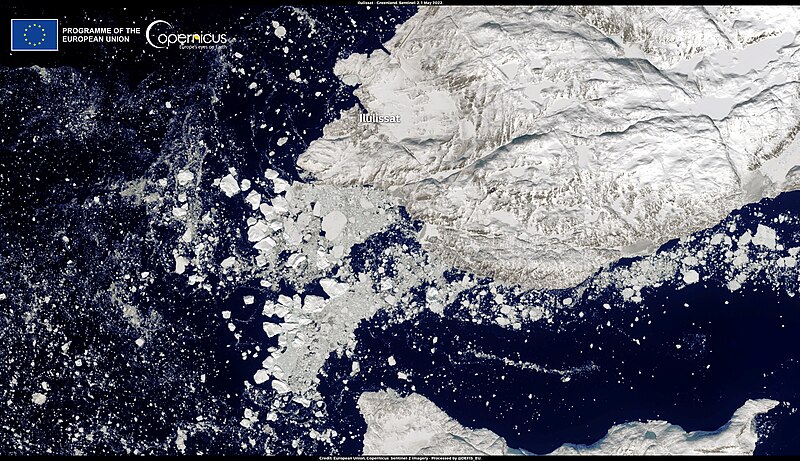File:Plastic pollution is affecting remote Arctic ecosystems.jpg

Original file (4,408 × 2,540 pixels, file size: 3.49 MB, MIME type: image/jpeg)
Captions
Captions
Summary[edit]
| DescriptionPlastic pollution is affecting remote Arctic ecosystems.jpg |
English: According to a study recently published in the Nature scientific journal, plastic pollution is becoming pervasive in the Arctic, even reaching remote areas with no human settlements. Globally, plastic debris and microplastics have infiltrated terrestrial and marine ecosystems, the cryosphere and the atmosphere. In the Arctic, the study argues that the plastic pollution levels detected are partly generated by local human activities (such as fisheries), but distant regions are found to be a significant source of pollution as plastic is carried by ocean currents. The data analysed in the study were sourced from different Arctic ecosystems. One of the extraction points is the Ilulissat Icefjord, visible in this image acquired by one of the Copernicus Sentinel-2 satellites on 2 May 2022. It is located on the west coast of Greenland, 250 km north of the Arctic Circle, and is one of the most active glaciers in the world. For its outstanding and universal value, it was designated a UNESCO World Heritage site in 2004. Remote regions, such as the Arctic, are very fragile. The Copernicus satellite data allow researchers to study and monitor their environmental condition, as well as assess the effects of pollution and climate change on them. |
| Date | Taken on 2 May 2022 |
| Source | Plastic pollution is affecting remote Arctic ecosystems |
| Author | European Union, Copernicus Sentinel-2 imagery |
Licensing[edit]

|
This image contains data from a satellite in the Copernicus Programme, such as Sentinel-1, Sentinel-2 or Sentinel-3. Attribution is required when using this image.
Attribution: Contains modified Copernicus Sentinel data 2022
Attribution
The use of Copernicus Sentinel Data is regulated under EU law (Commission Delegated Regulation (EU) No 1159/2013 and Regulation (EU) No 377/2014). Relevant excerpts:
Free access shall be given to GMES dedicated data [...] made available through GMES dissemination platforms [...].
Access to GMES dedicated data [...] shall be given for the purpose of the following use in so far as it is lawful:
GMES dedicated data [...] may be used worldwide without limitations in time.
GMES dedicated data and GMES service information are provided to users without any express or implied warranty, including as regards quality and suitability for any purpose. |
Attribution
File history
Click on a date/time to view the file as it appeared at that time.
| Date/Time | Thumbnail | Dimensions | User | Comment | |
|---|---|---|---|---|---|
| current | 16:46, 20 August 2023 |  | 4,408 × 2,540 (3.49 MB) | OptimusPrimeBot (talk | contribs) | #Spacemedia - Upload of https://www.copernicus.eu/system/files/2022-05/image_day/202204504_IlulissatGreenland.jpg via Commons:Spacemedia |
You cannot overwrite this file.
File usage on Commons
There are no pages that use this file.